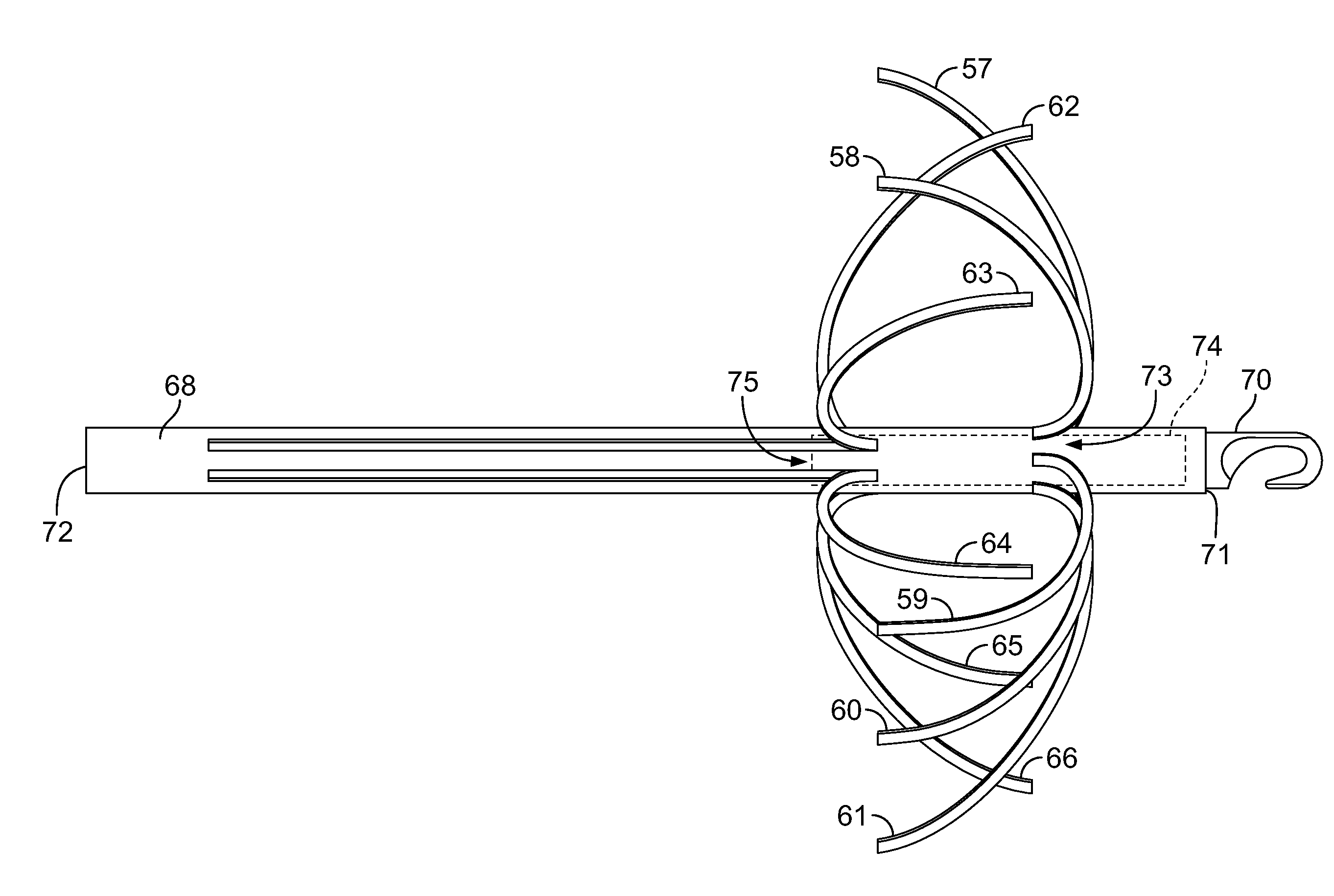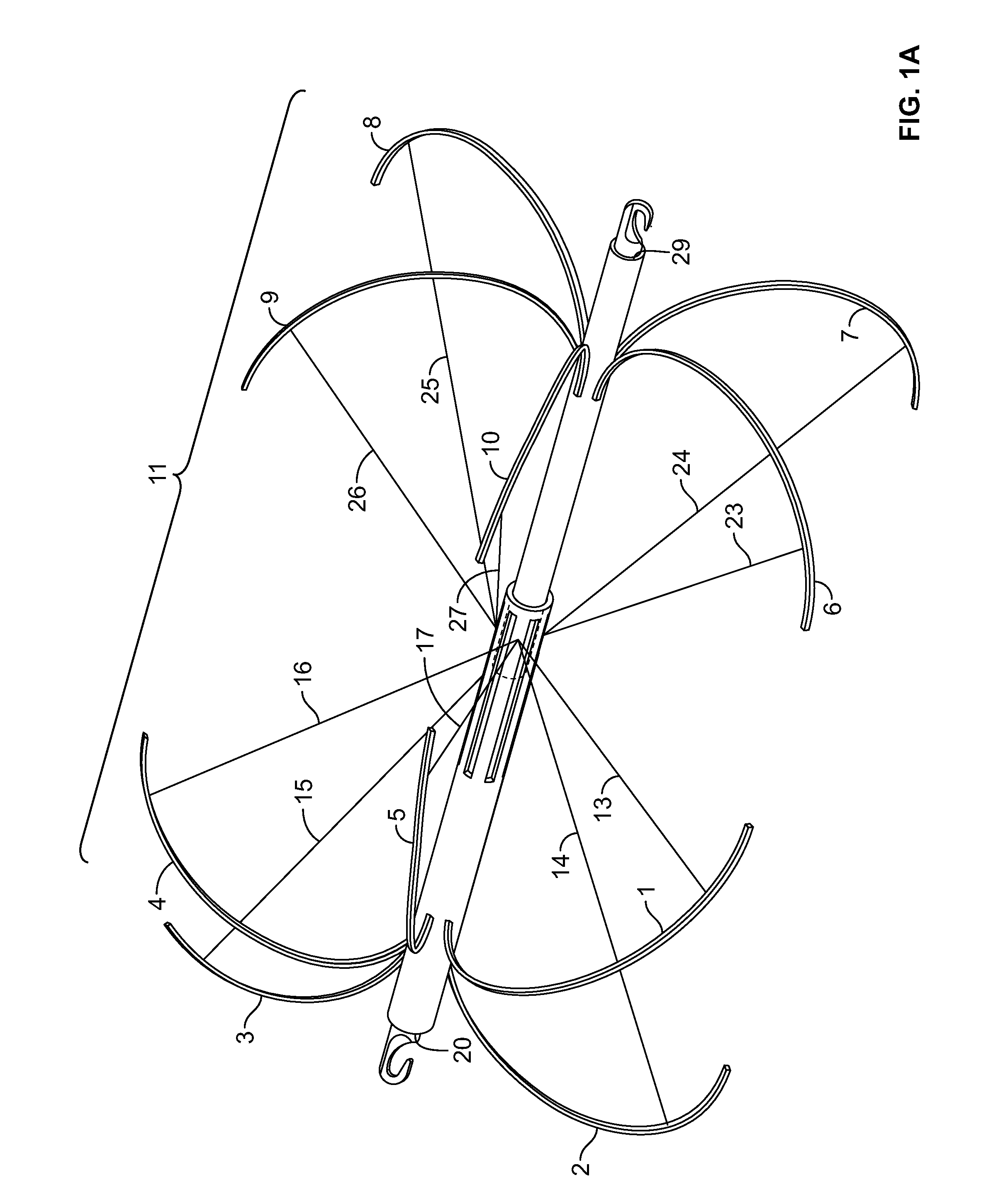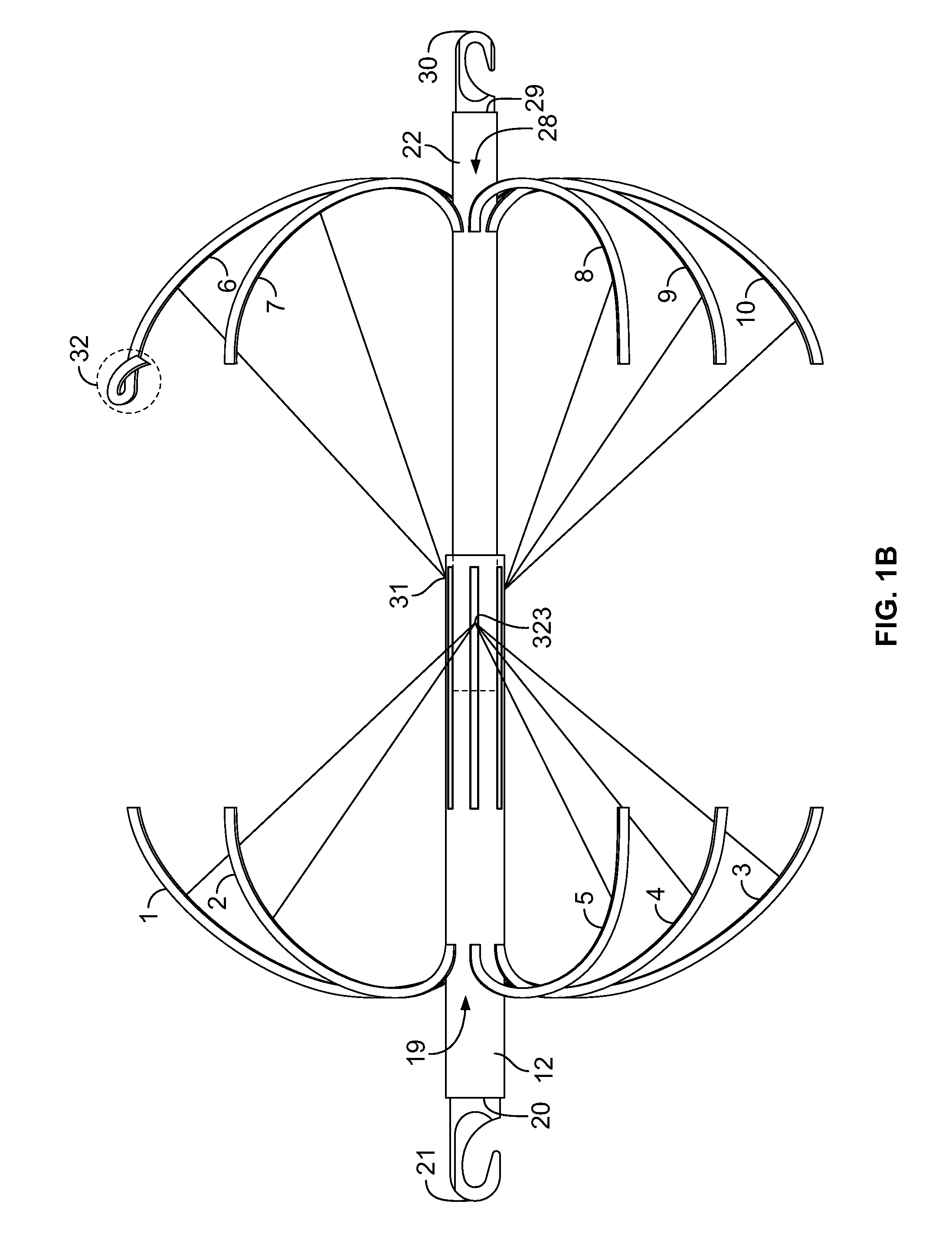Percutaneous Retrievable Vascular Filter
a filter and vascular technology, applied in the field of filtering within the vessel, can solve the problems of pulmonary embolism, thrombotic occlusion, and development of dvt is venostasis
- Summary
- Abstract
- Description
- Claims
- Application Information
AI Technical Summary
Benefits of technology
Problems solved by technology
Method used
Image
Examples
fourth embodiment
[0089]In a fourth embodiment, the present invention provides a filter comprising a first tube having a plurality of a first set of expandable legs and a plurality of a first set of slots, and a second tube having a plurality of a second set of expandable legs. Each leg of the first set has an end secured to the first tube and a free end, each leg of the second set has an end secured to the second tube and a free end. The free end of each leg in the first set is oriented in a direction opposite to the free end of each leg in the second set. Each slot of the first set on the first tube is positioned at a radial position allowing for deployment of each leg of the second set. The slots are oriented parallel to the cylindrical axis of the first tube. The radial positions of the second set of expandable legs may be the same as or be off-set from the radial positions of the first set of expandable legs. In one embodiment, the radial positions of the second set of expandable legs are off-se...
fifth embodiment
[0090]In a fifth embodiment, the present invention provides a filter comprising a tube having a plurality of a first set of expandable legs, a plurality of a second set of expandable legs and a plurality of a third set of expandable legs. Each leg of the first set, second set and third set has an end secured to the tube and a free end. The free end of each leg is oriented in the same direction. The number of expandable legs in the first, second and third set may be the same or be different. The radial positions of the first set, the second set and the third set of slots may be same or may be different. In a preferred embodiment, the number of expandable legs and the redial positions of the first, second and third set of expandable legs are the same. After deployment, the free end of each leg is oriented in the same direction pointing to the end of the tube distal to the first set of expandable legs. There is at least one notch at the end of the tube proximal to the first set of expa...
sixth embodiment
[0091]In a sixth embodiment, the present invention provides a filter comprising a tube having a plurality of a first set of expandable legs and a plurality of a second set of expandable legs. Each leg of the first set and the second set has an end secured to the tube and a free end. The free end of each leg in the first set is oriented in a direction opposite to the free end of each leg in the second set. Each leg of the first and the second sets is bent inward at the end closest to the tube for easy retrieval of the filter. Each leg of the first and second set may have at least one barb at its free end. The radial positions of the second set of expandable legs may be the same as or be off-set from the radial positions of the first set of expandable legs. A cage may be formed comprising the expandable legs of the first and second sets. The cage may form a sphere shape when the expandable legs of the first and second sets are deployed. At least one end of the tube has at least one no...
PUM
 Login to View More
Login to View More Abstract
Description
Claims
Application Information
 Login to View More
Login to View More - R&D
- Intellectual Property
- Life Sciences
- Materials
- Tech Scout
- Unparalleled Data Quality
- Higher Quality Content
- 60% Fewer Hallucinations
Browse by: Latest US Patents, China's latest patents, Technical Efficacy Thesaurus, Application Domain, Technology Topic, Popular Technical Reports.
© 2025 PatSnap. All rights reserved.Legal|Privacy policy|Modern Slavery Act Transparency Statement|Sitemap|About US| Contact US: help@patsnap.com



